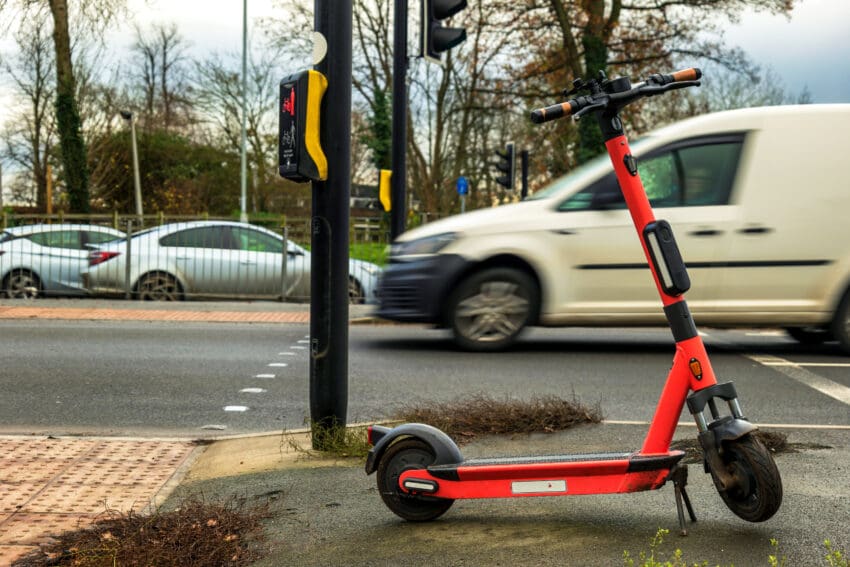The Future of E-Scooters: A Ride Alongside the Evolution of Regulatory Landscapes
Imagine gliding seamlessly through the city, past snaking lines of traffic and cacophony of horns, as you ride your way to work, college, or just about anywhere.
This is not a glimpse into a far-off utopia but a very real and sustainable future brought forth by the burgeoning market of e-scooters. These eco-friendly, nimble, and cost-effective modes of transportation are not just redefining urban mobility but also changing our perceptions of ‘commuting’ as we know it.
Recent years have seen the e-scooter market surge from being a niche innovation to an essential urban mobility tool, influencing the lives of city dwellers, tourists, and environmentalists alike. However, this rapid rise in popularity brings forth a new set of challenges. As with any disruptive technology, e-scooters have begun to spark a series of debates around safety and regulation. Policymakers worldwide are grappling to strike a delicate balance between the benefits of e-scooters and the potential risks they pose. Many countries have already created regulations to cope with this new transport method, while others still await the situation.
A Closer Look at the UK: Setting Ground Rules Through Trials
As e-scooters continue their upswing, the United Kingdom stands out as one of the countries proactively shaping the regulatory framework. With trials of rental e-scooters taking place in selected areas, the UK is setting a pioneering example of how regulations can evolve in tandem with technology.
These government-run trials have facilitated the setting of detailed rules to ensure the safety and efficiency of e-scooter usage. According to the government’s guidelines:
- Riders must hold a valid driving licence, ensuring that users have an understanding of road safety rules.
- The maximum speed limit for an e-scooter is capped at 15.5 miles per hour (25 km/hour). This limit balances the need for speed with safety considerations.
- E-scooters must have motor insurance. However, participants in these trials need not worry about arranging this, as the insurance is provided by the e-scooter rental operator.
- Helmets, though highly recommended for personal safety, are not a legal requirement. This policy leaves the decision to prioritize safety in the hands of the riders.
- Riders may use trial e-scooters on roads (except motorways) and in cycle lanes. However, for pedestrian safety, e-scooters are prohibited from pavements.
- E-scooters should be used by one person at a time to avoid any potential safety hazards from overloading.
Through such regulations, the UK is not just shaping its own e-scooter landscape but also setting an example for other countries navigating the tricky terrain of e-scooter regulation. As this exciting market continues to evolve, the lessons learned, and the frameworks established in these trials will play a significant role in shaping the global narrative around e-scooter usage.
The Rise of E-Scooters
In recent years, the e-scooter market has emerged as a potent force reshaping urban mobility. E-scooters, the electric-powered cousins of traditional kick scooters, are not just eco-friendly, but they offer convenience, cost-effectiveness, and a unique travel experience. They’ve transformed the ‘last-mile’ problem – the final leg of a journey usually made by foot or cab – into a breezy, exhilarating ride.
From corporate employees navigating congested city streets to tourists exploring new terrains, e-scooters have made commuting an adventure rather than a chore. However, this rapid ascent of e-scooters has given birth to a new wave of regulatory challenges.
While e-scooters promise a sustainable future, their booming popularity has led to an influx of safety and regulatory concerns. The influx of e-scooters in urban environments has sparked debates around public safety, infrastructure adaptation, and regulations.
Policymakers are grappling with regulating this emerging market, aiming to balance public safety, infrastructure costs, and the economic potential of these new-age vehicles. Regulatory bodies are under pressure to put a framework in place that sets clear guidelines for usage, maintains public order, ensures rider safety, and addresses liability issues in the event of accidents.
E-Scooters and the Online Casino Industry: A Comparative Study
The emergence of e-scooters and their ensuing regulatory dilemmas resonate strongly with the evolution of the online casino industry in Europe. The development of the best online casino Europe has witnessed was not a smooth ride. Similarly, online gambling in Europe underwent a series of regulatory adaptations and refinements before establishing itself as a reputable and well-regulated industry.
The online gambling market’s journey towards achieving a balance between consumer protection, market growth, and regulations provide valuable lessons for the e-scooter industry. Regulators need to adopt a future-forward approach that considers the technological capabilities of e-scooters, understands their potential impact, and establishes regulatory mechanisms that foster growth and ensure safety.
Future Outlook
In terms of their regulatory future, e-scooters may be where online casinos were a few years ago. With increasing acceptance and integration of e-scooters into urban landscapes, regulations are expected to evolve in response. As more studies on the subject of emergencies, like this one that found that e-scooters cause more injuries than motorbikes, governments need to regulate the market further.
It’s likely that we’ll see licensing systems for e-scooter operators, robust safety protocols, city-specific guidelines, and an overall increase in regulatory scrutiny.






